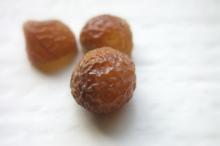I recently found a great reason to switch from commercial detergents containing sulfates like SLS, SLES, and other irritating surfactants. I'm loving life free of adult acne and dandruff, don't get me wrong! But it can be a mind-bender to shift away from standard over-the-counter detergents for shampoo, toothpaste, laundry, and other uses.
Luckily, making the switch to better cleaning products isn't just good for you and your skin: it's good for the environment, and your budget too! Traditional detergents are made with petroleum products. (Hello, Gulf of Mexico, nice knowing ya.) And they don't biodegrade, which means that their toxic ingredients seep into our ground water and the ecosystem at large.
The first thing I learned was the difference between "soap" and "detergents." Soap in this context is an alkaline product made with oils, which cleans by lifting away dirt. Soap in its simplest form is made by mixing lye with fats.
Most of the things we call "soap" these days are technically detergents. This is a chemical concoction of ingredients which degrease, foam, and smell very pretty. Unfortunately they also can be very irritating, and may have lasting health effects.
The canonical "better soap" is Dr. Bronner's. Yes, the crazy label soap! Almost everyone will recognize this, if only as "that weird peppermint soap that my parents' hippie friends used in the 70s." Dr. Bronner's is the real deal, and you can use it for just about everything. Just be sure to dilute it!
This liquid soap is highly concentrated. For most uses, dilute it 1 part soap to 40 parts water (about 1 teaspoon soap to a cup of water). I have been using a bottle of this dilution level as shampoo. It also works great as a refill in a liquid soap dispenser for washing your hands.
I like to use a stronger mixture (about 1 tablespoon per cup of water) for hand-washing dishes. I store it in a plastic squeeze bottle meant for ketchup and other condiments.
Add ¼ cup of soap to the washing machine for laundry. I recommend this for warm water washing only.
You can even use a few drops of the diluted form as toothpaste, although I wouldn't recommend it.
Dr. Bronner's comes in several varieties: peppermint, eucalyptus, almond, rose, lavender, citrus, tea tree, and "baby mild."
The one down side to Dr. Bronner's is that it performs poorly in cold water. It lumps up and separates, and no matter how hard I splash the water it never mixes properly. This is a problem for my regular laundry (because I always wash in cold water), and for when I hand-wash my knitting (wool must be washed cold).
For laundry, it's soapnuts to the rescue! These are the nuts of the saponin tree. They smell terrible, but they don't leave their smell behind.
Soap nuts are a little more expensive than Dr. Bronner's, but they are totally worth it. The nuts themselves don't work very well in cold water, but you can easily make a soapnut soak, which creates several cups of liquid soap nut soap. The soak works great in cold water! I like to add a few drops of tea tree oil to scent the liquid.
Creative Commons-licensed image courtesy of Flickr user jilldoughtie
